Plastic is used in everything in this era, be it food packaging, garments, or personal hygiene items. Even though plastic debris is known to pose harm to the environment, microplastics that are tiny particles smaller than five millimeters are an even more subtle and unseen danger. The food we eat, the water we drink, and even the air we breathe all contain microplastics. The potential health risks posed by microplastics can be severe due to their usage in daily life.
“Microplastics can enter the human body mainly through ingestion (contaminated food and water), inhalation (airborne particles, especially in urban areas), and dermal exposure (contact with microplastics in cosmetics or skin-care products, though dermal absorption is less studied),” explained consultant ecologist Rafiul Haq.
There are two types of microplastics. The first are primary microplastics, which are purposefully made small like the exfoliating beads found in skin care products such as scrubs, etc. Secondary microplastics are created when larger plastic waste breaks down as a result of exposure to water, sunlight, and other environmental conditions.
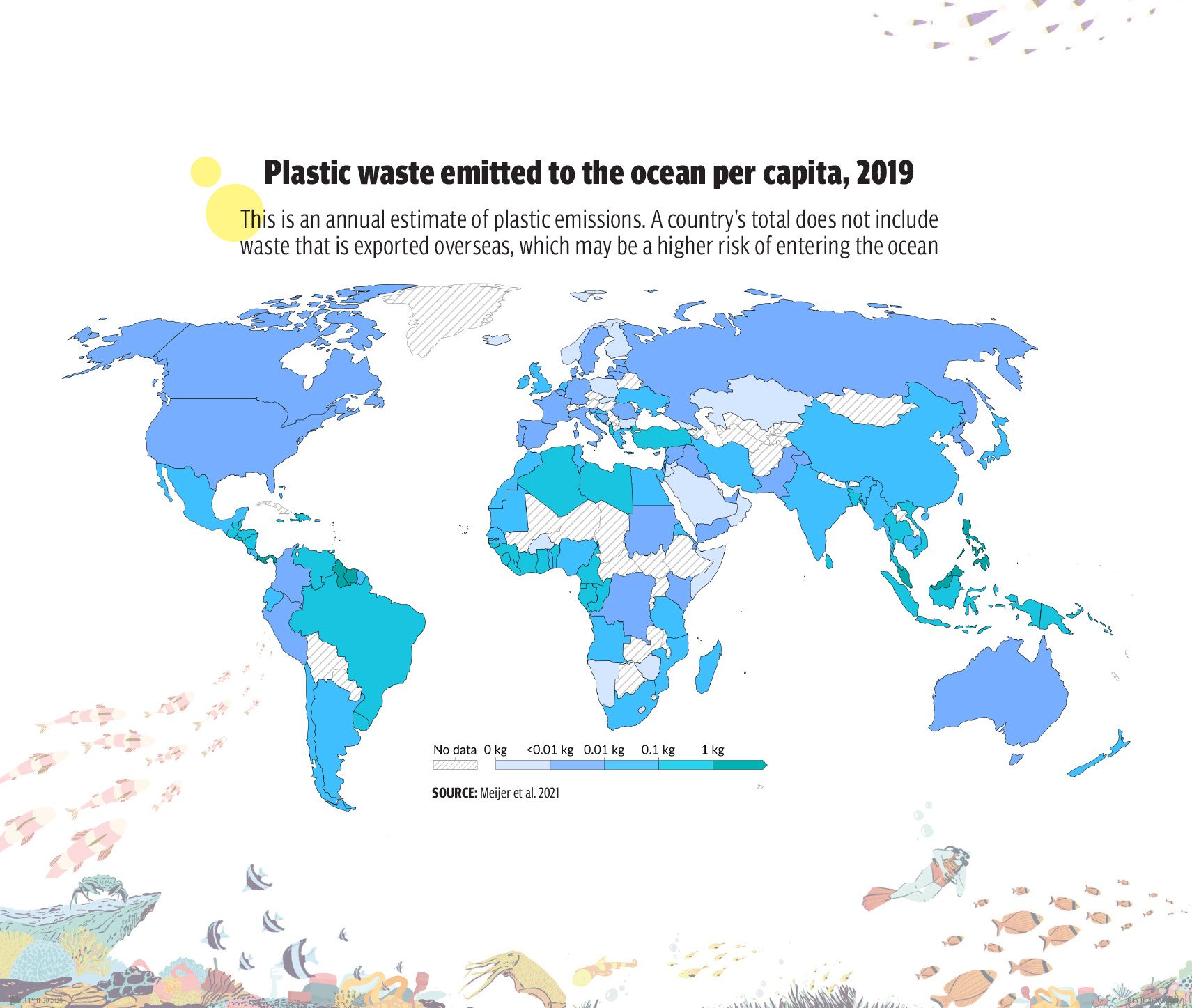
Most people are exposed daily, especially in areas with heavy plastic use and urbanisation. Haq said that microplastics are pervasive globally, with studies having detected them in water sources, soil, marine life, and even in the atmosphere.
These particles are extremely difficult to remove from the environment because of their tiny size, which allows them to readily penetrate soil, water sources, and even the atmosphere. “There are mostly two sources of microplastics from where they are generated. One is decomposition and the second is from sea waste, but the effects are the same, and it could be cancerous in some situations,” said environmentalist Waqar Ahmed.
According to research, microplastics have impacted almost every facet of human existence. The most frequent routes of human exposure are ingestion and inhalation, as studies have discovered them in salt, seafood, bottled and tap water, and even the air. Tens of thousands of microplastic particles are ingested by the average human each year through food, water, and air, according to a 2020 study published in Environmental Science and Technology. After entering the body, these particles may gather in different tissues, which could eventually lead to more severe health problems and immunological reactions. “The presence of such particles in the body has adverse health effects. If we talk about products, then toothpaste and facial scrubs have microplastic particles, and we are consuming it without even batting an eye,” Ahmed explained, adding that the litter and garbage that is dumped into the sea comes back with water, soil, and seafood and that, too, is harming people.
Microplastics are an urgent threat around the world, and the risk they pose is not merely theoretical. Poorly disposed plastics decompose in the environment, increasing the amount of microplastic contamination in soil and water, putting countries with weak waste management systems in greater danger. Even in countries with stricter waste management rules, microplastics are a problem due to the difficulty in filtering them out of urban water systems and their slow rate of degradation. “People who eat a lot of fish and other marine products are at higher risk for health problems because coastal areas, which rely largely on marine life for sustenance, are more susceptible to microplastic pollution in seafood,” said environmentalist Tofiq Pasha Mooraj.
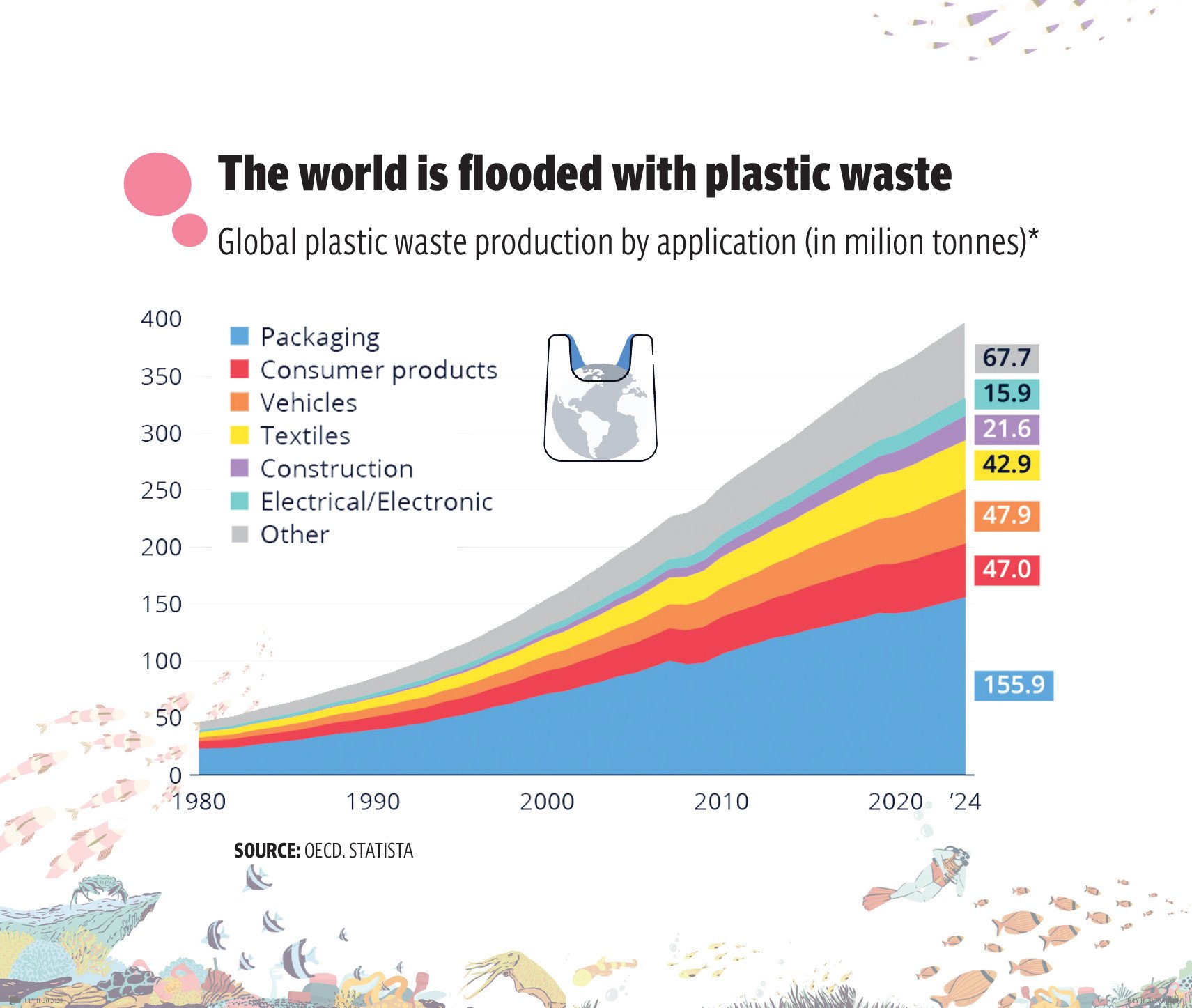
Fight against microplastic
One of the best strategies to lessen microplastic pollution is to eliminate plastics like bottles, bags, and packaging. Choose reusable materials such as cloth bags, glass or metal containers, and clothing made of natural fibers. “Plastic bottles have a certain age varying from quality to other factors, and after some time, the plastic bottle releases the microplastic that we drink in our daily use. It infects our stomach and immune system,” said Ahmed. Eliminating or at least limiting the use of plastic on a larger scale is the only way to avoid microplastics, he said.
Microbeads, a type of primary microplastic found in toothpaste and exfoliants, are included in many personal care products. “The consumption of microplastics can be considerably decreased by reading product labels and choosing natural exfoliants like sugar or oats,” he explained. Products containing polyethylene (PE) and polypropylene (PP), which are frequent signs of microbeads, should be avoided.
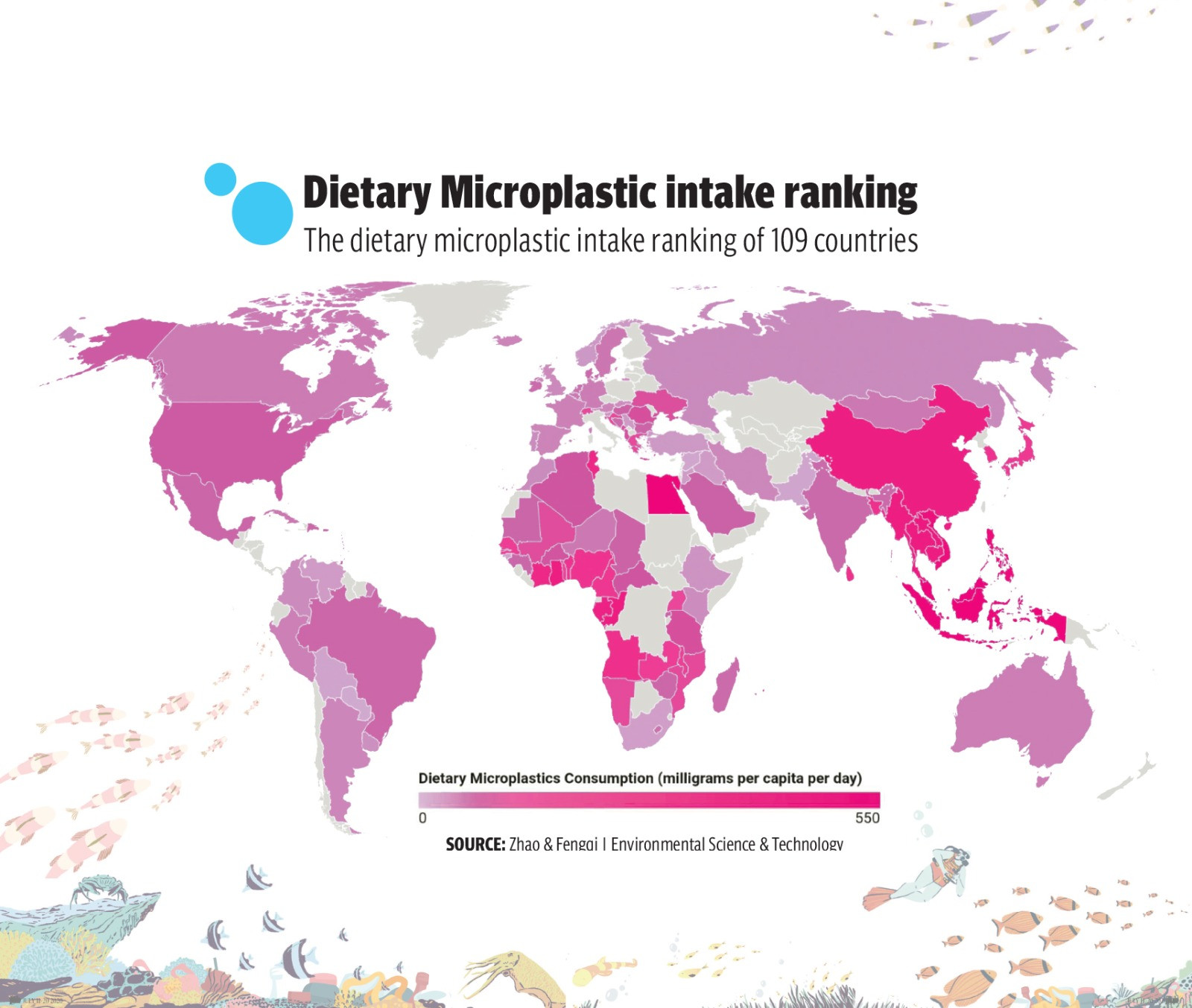
Certain filtration techniques, such as reverse osmosis, are successful in lowering the amount of microplastics in drinking water, even though no filter can eliminate them. Because bottled water has been proven to contain microplastics in higher quantities than tap water, choosing filtered water instead of bottled water also lowers the danger. “Plastic should be eliminated to help stop this. There is no alternative to this problem because we are drinking, eating, and even breathing polythene as microplastics are also airborne,” lamented environmentalist Mooraj.
Choose glass or metal containers over plastic for food storage, and avoid heating food in plastic containers, use water filters designed to reduce microplastic particles in drinking water. “Processed foods may contain more microplastics from packaging, so opting for fresh, unpackaged foods can help. Wash synthetic fabrics less often or use filters that capture microfibers to reduce microplastic release. Also, choose products labeled microbead-free or microplastic-free, especially for skincare and cosmetics,” Haq suggested.

Microplastic particles from synthetic textiles, furniture, and household objects can enter indoor airways. Ventilating rooms can lower the concentration of airborne particles, and routine dusting and cleaning can help reduce indoor microplastic exposure. “It is alarming that these tiny particles have started getting into our bloodstreams, and the threat is not taken as a threat,” he pointed out, adding that no matter how many closed spaces you have, you breathe the same air and go to the same malls, schools, and workplaces.
Supporting laws that limit the manufacture of plastic and encourage improved waste management is essential on a bigger scale. Communities may work together to lessen the amount of plastics and microplastics released into the environment by advocating for laws governing the manufacture of plastics, urging businesses to use sustainable practices, and taking part in cleanup campaigns. “Things are not equal for everyone, but laws should be stricter as every time government initiatives succumb to the idea that 70,000 people will be jobless with the plastic ban, but the same people can make an alternative for plastic,” Mooraj pointed out.
When synthetic fabrics like polyester and nylon are washed, microplastic fibers are shed, which adds to the contamination of water sources. Selecting natural textiles such as linen, cotton, or wool will greatly lessen the shedding of microplastics. Microplastic contamination can also be reduced by washing garments less frequently and with front-loading machines, which are kinder to textiles. “Even bio-degradable plastic won’t help in this matter because it only blocks the drains and keeps floating, with all these ideas, we are just self-defeating the life we live,” the environmentalist explained.
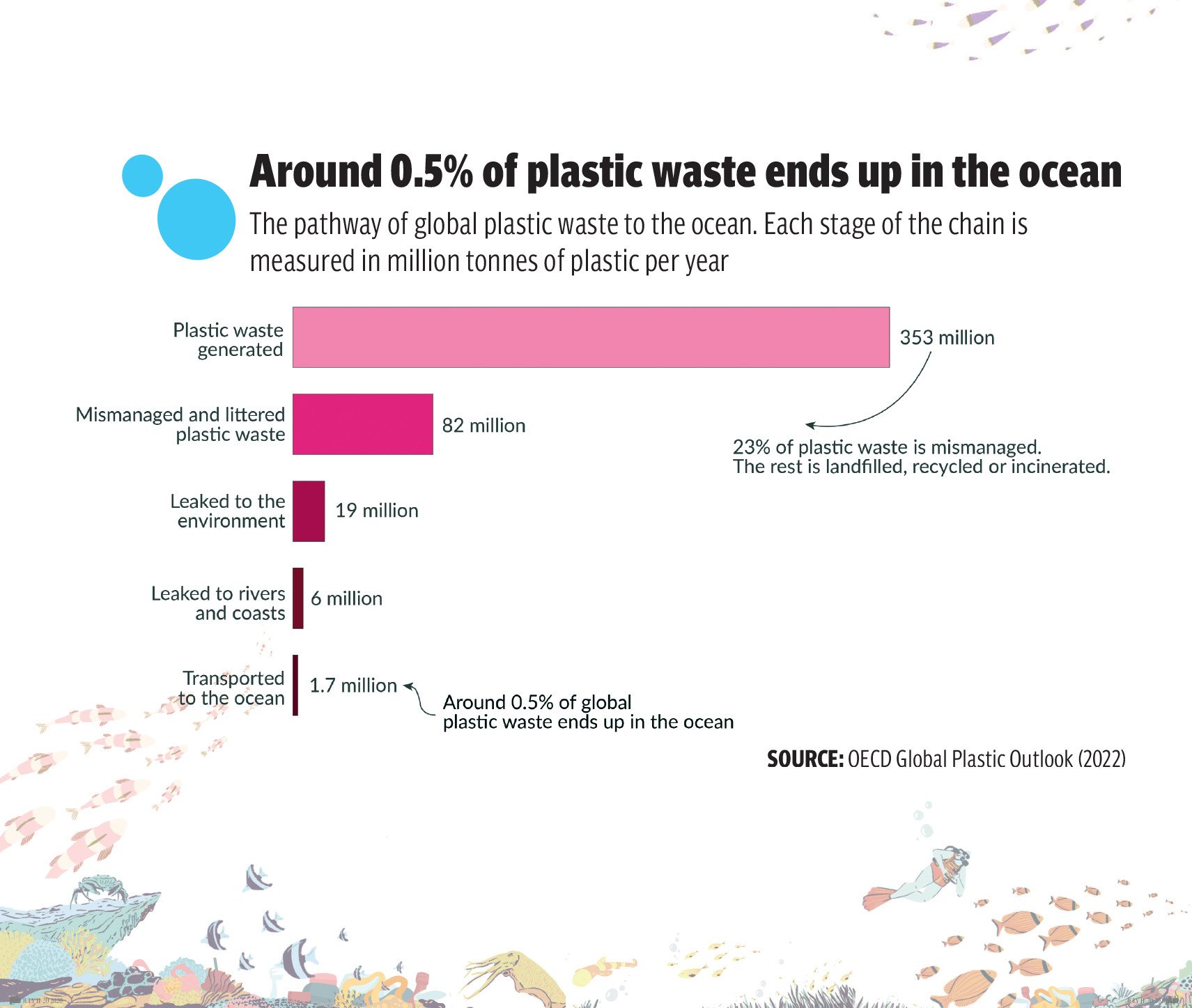
Despite being invisible to the human eye, microplastics have a noticeable and alarming effect on human health. The evidence to date emphasises the urgent need to limit exposure, even though the full extent of their health consequences is still unknown. “Plastic bottles, when squeezed, get some white lines around, it’s like microplastic tearing from the bottle, and so many chemicals that are used to make the bottle all is what you drink, there are so many examples and problems like this, and 90% haven’t been discovered yet,” said Mooraj.
Diseases like obesity, metabolic problems, and inflammatory bowel disease are increasingly associated with a disturbed gut. The presence of microplastics in the digestive tract may weaken the intestinal barrier, allowing bacteria and dangerous chemicals to enter the bloodstream. “Microplastics in the gastrointestinal tract may cause inflammation, oxidative stress, and disrupt gut microbiota. They could also carry pathogens or toxic chemicals into the body, and inhaling microplastics, especially in fine particulate form, may contribute to respiratory conditions like asthma, fibrosis, and inflammation, potentially leading to lung tissue damage,” said consultant ecologist Haq. He also added that, while definitive connections are still being researched, microplastics could be linked to possibly contribute to cancers and hormonal disorders over time due to their chemical toxicity and persistent nature in body tissues.
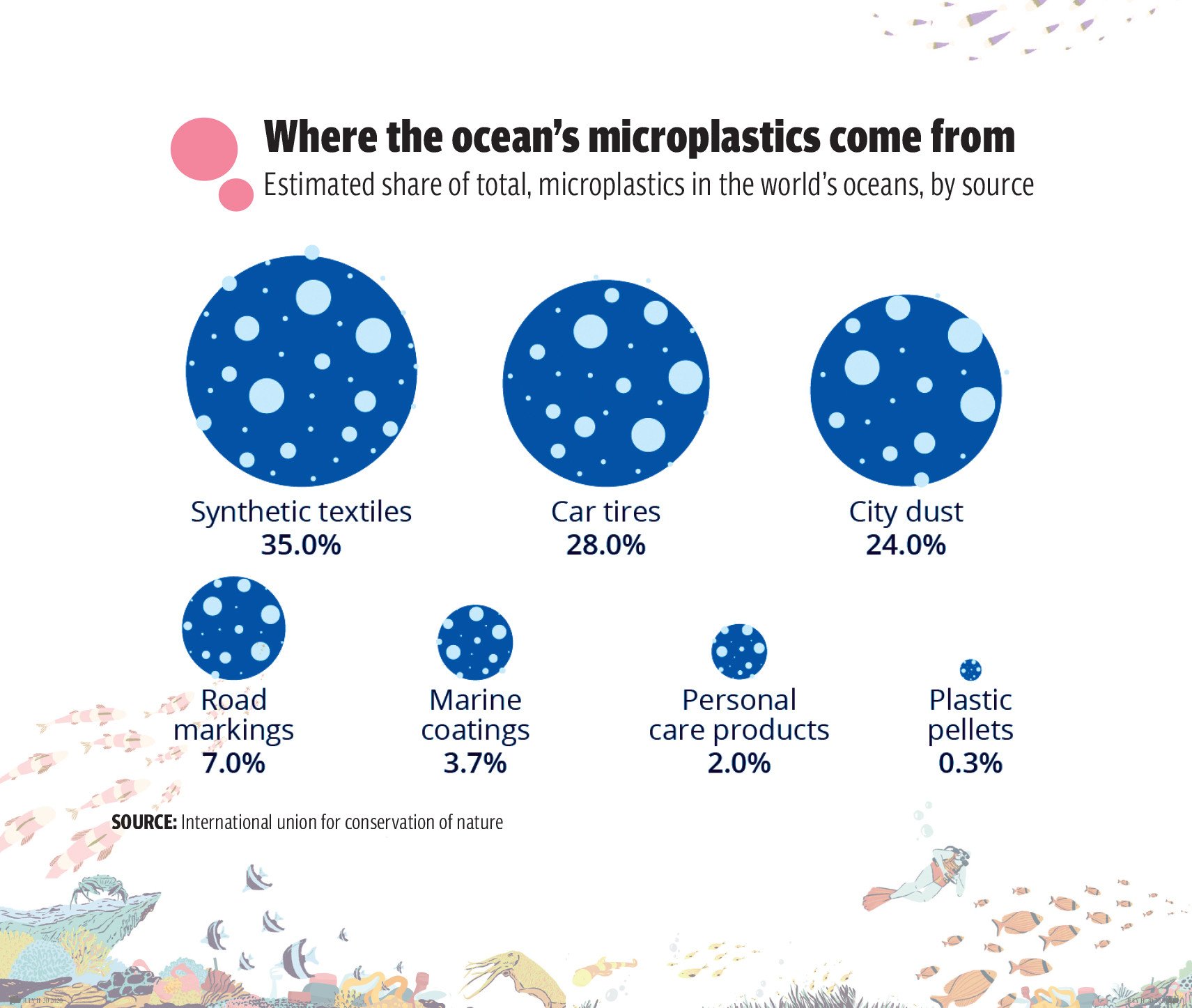
Chemicals used in production, including phthalates, bisphenol A (BPA), and polycyclic aromatic hydrocarbons (PAHs), are present in many microplastics. These substances can enter the body, raising the risk of diseases like diabetes, infertility, and some types of cancer, affecting reproductive health, and are connected to developmental problems in children such as BPA and phthalates. “BPA is an endocrine disruptor, interfering with hormonal balance. It has been linked to reproductive issues, cardiovascular problems, and certain cancers other than that, phthalates also disrupt hormones, affecting reproductive health and fetal development and even leading to metabolic diseases,” Haq said. These chemicals are particularly concerning because they mimic or interfere with natural hormones and can persist in the body, accumulating over time. They are especially harmful to vulnerable populations like children and pregnant women.
The need for scientific studies and regulatory measures is increasing, along with public awareness of microplastics, to protect future generations from the possible risks posed by microplastics by being proactive and reducing our use of plastic, selecting safer products, and supporting environmental regulations. “Governments can restrict single-use plastics, enforce proper waste management, regulate plastic additives, and fund research on microplastic impacts and grassroots movements and community cleanups can reduce plastic waste in local environments, and public awareness can drive consumers to make more eco-conscious choices, he suggested.
Individual effort alone aren’t enough to address the scale of microplastic pollution. Collective actions amplify impact by holding corporations accountable and advocating for systemic changes in plastic production, waste management, and pollution prevention.
